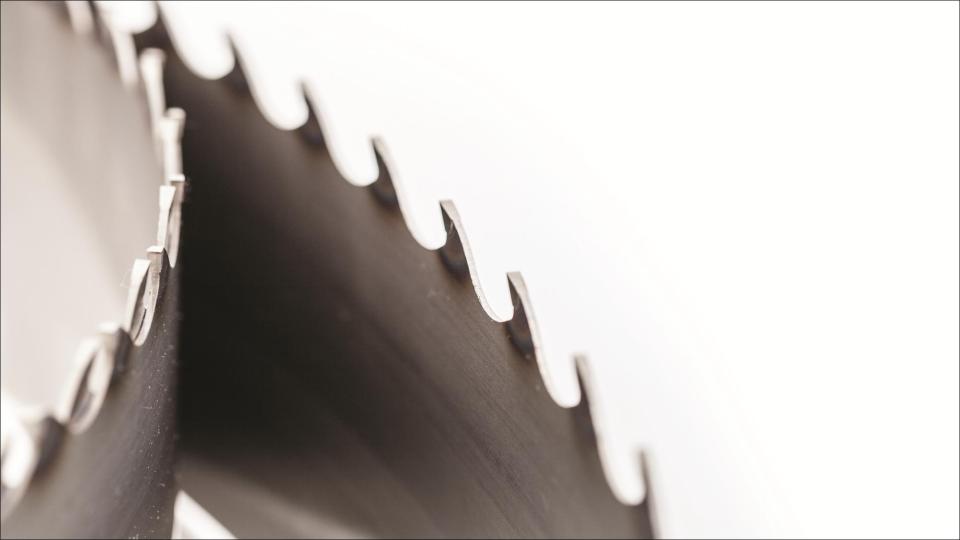
HOW DO WE CHOOSE THE THICKNESS OF BANDSAW BLADES?
How do we choose the right thickness of bandsaw blades?
The correct choice of the thickness of the bandsaw is of major importance for the sawing process.
The right thickness can prevent both the cracking of the bandsaw and the phenomenon of cutting into waves.
To avoid these situations, we recommend applying the following formula:
Gp[mm]=Dv[mm]/1000
Gp= the approximate thickness of the cloth
Dv= flywheel diameter in millimeters
How do we apply the formula?
By dividing the diameter of the flywheel by 1000 we will obtain an indicative value of the thickness of the saw blade. As a rule, we will choose from the range of standard thicknesses of the steel strip, the value closest to the result of the formula, preferably the upper one.
For example, if we have a machine with a flywheel diameter of 1600 mm, the approximate thickness of the bandsaw would be 1600/1000, i.e. 1.6 mm. Since this is not a standard thickness, as a rule, you will opt for a bandsaw with the upper thickness of 1.65 mm.
Also, in the case of a machine with a flywheel diameter of 1000 mm, the recommended thickness of the bandsaw will be 1 mm, which is among the standard thickness values, and in this case, it can be chosen as the material thickness.
Of course, neighboring values both lower and higher than the guideline value obtained from the calculation can be chosen, depending on the specific conditions, such as: the essence of the cut wood, the length of the bandsaw, the special requirements for cutting efficiency (small thickness of cuts), etc.
Why is the thickness of the bandsaw blades important?
- If the thickness of the blade is less than that calculated by applying the formula Dv/1000, the width of the cut is smaller, but instead the stability of the blade may be affected and thus, the phenomenon called cutting in waves may occur.
- If the thickness of the blade is too large in relation to the diameter of the flywheel, the stability of the blade is better, it is possible to work with high cutting speeds, but instead there is the risk of cracking of the blades due to the strong fatigue stress of the material.
That's why it's good to analyze all the options every time and choose the one that best meets the cutting conditions and efficiency requirements.
Contact
Adress: 440122, Satu Mare, Aurel Vlaicu 102-106, Romania
Phone: +40-261-711511
Email: metamob@metamob.ro

